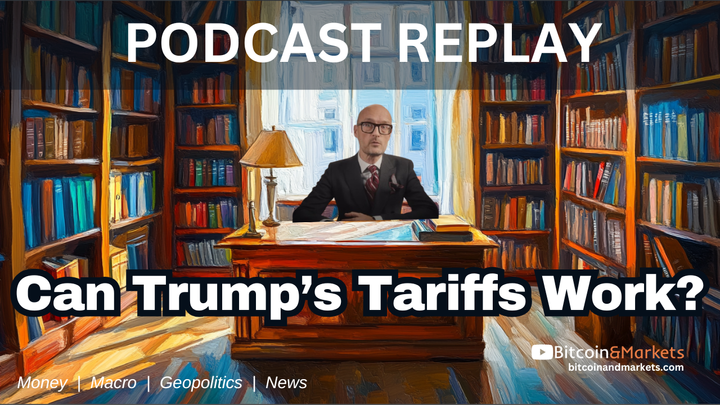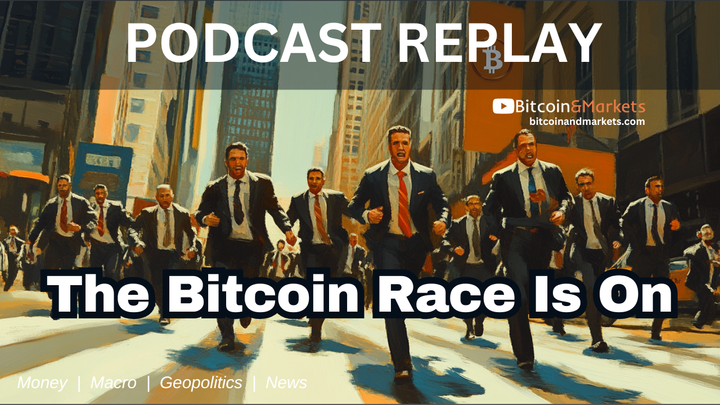Central Bankers In Their Own Words - FED99
Highlights and reaction to central bank press conferences from Jerome Powell and Christine Lagarde.
This post is to provide the associated images and commentary for the audio podcast until the full write up is posted on Bitcoin Magazine.
Fed Watch is the macro podcast for bitcoiners. Each episode we discuss current events in macro from across the globe, with an emphasis on central banks and currencies.
In this episode, CK and I listen and react to highlights from this month’s two central bank press conferences, Federal Reserve Chairman Powell and ECB President Lagarde. Central banks are one of the most misunderstood institutions in our modern world. Many analysts simply tell you what the Fed or the ECB thinks and what they do to disrupt the global economy, but on our show, we like to give you primary source material from which you can start to form your own educated opinion.
We live stream most of our shows on the Bitcoin Magazine YouTube channel on Tuesdays at 3pm eastern. Mark your calendars!
Federal Reserve Chairman Powell’s highlights and reaction
Chairman Powell’s comments were highlighted by a few narratives. These are simply what they say they are doing, not our analysis.
- Their primary concern is inflation fighting
- They will be adaptive to new data
- A tight employment market threatens to exacerbate inflation
- They cannot affect the supply side, so they will tamp down demand to bring down prices
The main metric guiding the Federal Reserve’s course of rate hikes is CPI and “inflation” expectations. There are several ways to measure this, the Fed uses consumer surveys. This is a critical distinction between surveys and market-derived expectations, because surveys will not distinguish sources of price increases where the market-derived measures will do that.
Below is the Fed’s survey of inflation expectations. You can see, the median prediction is above 8%.
Source: NY Fed
However, the market-derived data, namely the 5 and 10-year Breakevens and the 5y-5y Forward, are showing inflation expectations around 2.5%. What accounts for this huge difference? It is because the market-derived data is measuring actual money printing, or in other words, actual inflation. The survey data on the other hand is measuring generic price increases which are much more highly affected by supply shocks; in this case, self-imposed supply shocks.
Source: FRED
ECB President Lagarde highlights and reaction
We also listen to a few clips of President Lagarde’s press conference. Here we get a flavor for the ECB’s formative narratives.
- Inflation is the fault of Covid and Putin
- Their governing council has expertly formulated a journey to normality
- They will begin to raise rates and tighten their balance sheet in July
- They are dedicated to “anti-fragmentation”, or in other words, avoiding a European Debt Crisis 2.0 and keeping the Eurozone together
- They have all powerful tools
The ECB faces a different challenge than the Federal Reserve. The ECB must raise rates with some more indebted countries, already with anti-Euro parties growing, facing uneven effects, as we can see with credit spreads in Italy for example.
Links
Powell’s speech https://youtu.be/IojU0hD3A_A
Lagarde and the ECB https://youtu.be/d_utpAxGMYo
Reuters article https://www.reuters.com/markets/europe/ecb-hold-unscheduled-meeting-discuss-market-rout-2022-06-15/
That does it for this week. Thanks to the watchers and listeners. If you enjoy this content please SUBSCRIBE, REVIEW on iTunes, and SHARE!




